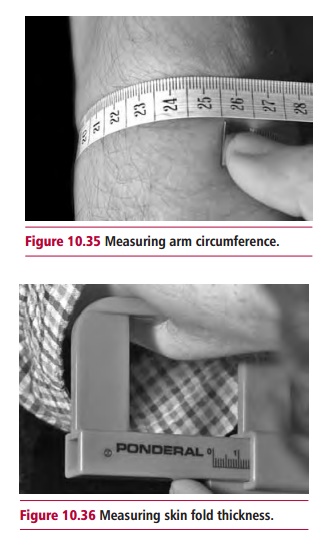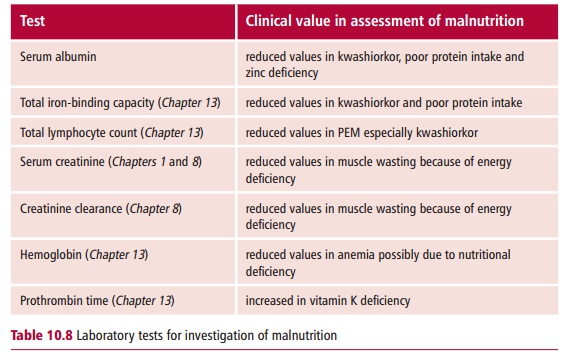Chapter: Biology of Disease: Diet and Disease
Investigating Nutritional Disorders
INVESTIGATING NUTRITIONAL
DISORDERS
The main objectives in investigating nutritional disorders are
to detect malnutrition, determine the most appropriate treatment and to monitor
the progress of the patient during treatment. A number of fairly general
investigations are available for patients suspected of suffering from
malnourishment, for example taking a medical history, physical examination and
laboratory investigations. A patient’s medical history may help to reveal the
underlying basis of the complaint. A significant part is determining the
dietary history, which usually involves dietary recall of the last one to seven
days, or food frequency questionnaires where patients estimate how often a
particular food on a list has been eaten. A medical history also includes
specific questions concerning recent weight changes, dietary habits, for
example alcohol consumption, appetite, GIT function, use of vitamin and mineral
supplements and drug intake. A physical examination can include anthropometric
measurements, such as weight, height, body mass index , arm circumference and skinfold thickness. Arm
circumference is an indicator of muscle mass. The arm circumference is measured
at the midarm point in millimeters (Figure
10.35) and values are typically 293 mm in males and 285 mm in females.
Skinfold thickness indicates the extent of subcutaneous fat stores. It is
commonly measured at the biceps, triceps, subscapular and suprailiac sites in
both males and females. In, for example, the triceps measurement the arm is
allowed to hang freely and a fold of skin above the midpoint of the arm is
pulled from the underlying muscle and measured to the nearest millimeter using
calipers (Figure 10.36). Values are
typically 12.5 and 16.5 mm for males and females respectively. Measurements at
the four sites should be made in duplicate and should not vary by more than 1
mm. If consecutive measurements become increasingly smaller the fat is being
compressed and other sites should be assessed while the tissue recovers.
However, the accuracy of the test depends upon selecting the sites correctly,
an appropriate technique in taking the measurements and the experience of the
tester; hence the trend is more important than the values at any one time.
Values for arm circumference and skinfold thickness are compared with standard
values for the same sex. Undernutrition is indicated if they are less than 90%
of these values.

The appearance of the skin, hair, nails, eyes, bones, teeth and
mucous membranes may reveal signs of malnutrition. A number of general
laboratory-based investigations on blood and urine samples can aid in
diagnosing malnutrition and are listed in Table
10.8. These tests are not reliable when

Related Topics